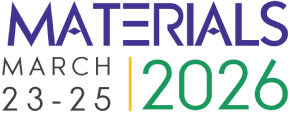Title : Jelly fig polysaccharide based biocompatible hydrogel loaded with lauric acid for wound tissue regeneration: An in vitro study
Abstract:
Tissue regeneration is an essential process to maintain, restore a normal anatomical structure and function of the skin. Natural biopolymer-based polymeric hydrogels are capable of absorbing a large quantity of water to maintain the moisture environment at the wound site. The eminence of hydrogels should be biocompatible, non- toxic, maintain the moist environment to supply oxygen and nutrients, protect the wound against microbes and absorb enough wound exudates. Here, we have prepared hydrogel using jelly fig polysaccharide extracted from achenes of jelly fig (Ficus pumila var. awkeotsang) as base material and loaded with Lauric acid (0.5 and 1%) as a bioactive ingredient to promote the tissue regeneration. The physiochemical properties of the hydrogels such as FTIR, swelling, degradation, morphology, TG/DSC, and release were thoroughly characterized. The biocompatibility of the hydrogel was also studied using NIH 3T3 fibroblasts by MTT assay, live/dead and cell proliferation by DAPI/FDA staining. Further, tissue regeneration ability was assessed by in vitro scratch wound assay. MTT assay showed that jelly fig (JF) hydrogel and Lauric acid loaded jelly fig (JF + LA) hydrogels were biocompatible. DAPI staining showed more live cells on hydrogels compared to control (Tissue culture plate). Increased cell proliferation was observed in JF + LA 1% hydrogels compared to control. In vitro scratch wound assay revealed that (JF + LA 1%) hydrogels improved the cell migration and completed wound closure within 24 h. Hence, the JF + LA hydrogels can be used as an ideal wound dressing for the acceleration of wound repair and tissue regeneration.
Audience take away:
- Jelly fig polysaccharide based hydrogel will be an interesting new biomaterial in the field of biomedical applications.
- Jelly fig based hydrogel will be biocompatible and patient-friendly.
- This will be an advantage to use many natural polysaccharides for the biomaterials preparation.
- This kind of materials will be cost-effective and affordable to all.
- Jelly fig polysaccharide based materials are easy to prepare and use as efficient wound dressings



